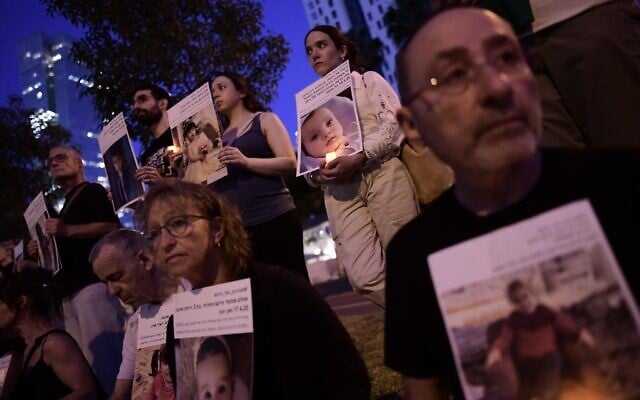


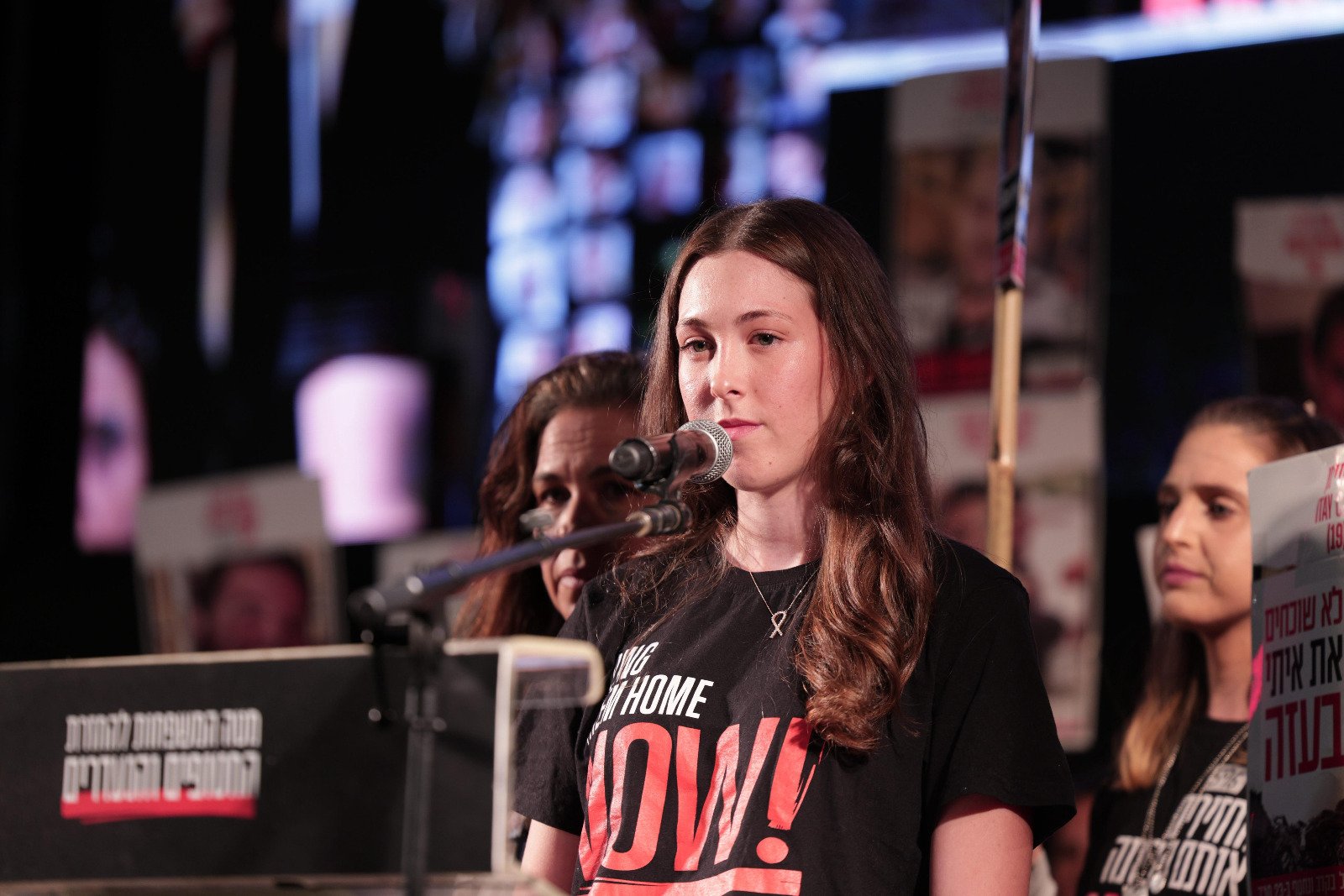
Thousands gathered in cities across the country Saturday night for anti-government rallies and hostage demonstrations, as relatives of captives pleaded with the government to agree to a deal to release them as part of a ceasefire in Gaza.
The main rally focused on opposition to the government took place at Tel Aviv’s Habima Square, where demonstrators gathered to demand an end to the war and new elections, while decrying the burden of the war on reservists as ultra-Orthodox Yeshiva students continue to largely evade military recruitment.
Meanwhile, with negotiations in Qatar again seeming to have stalled, protesters demanding a hostage deal gathered at nearby Hostages Square outside the Tel Aviv Museum, where a former captive told the crowd that her greatest terror in captivity was Israeli strikes, adding that she feared for the lives of the remaining hostages held in Gaza.
Terror groups in the Gaza Strip are holding 58 hostages, including 57 of the 251 abducted by Hamas-led terrorists on October 7, 2023.
Naama Levy, one of five IDF female surveillance soldiers released in the recent ceasefire-hostage deal in January, told the crowd of some 1,500 people: “They come by surprise.”
“First you hear a whistle, pray it doesn’t fall on you, and then — the booms, a noise loud enough to paralyze you. The earth shakes.”
“I was convinced every single time that I was finished, and it’s also what put me in the greatest danger: one of the bombardments collapsed part of the house I was in,” she said. “The wall I was leaning on didn’t collapse, and that’s what saved me.”
She added: “That was my reality, and now it’s their reality. At this very moment, there are hostages who hear those same whistles and booms, shaking with fear. They have nowhere to run, they can only pray and cling to the wall while feeling a horrible powerlessness.”
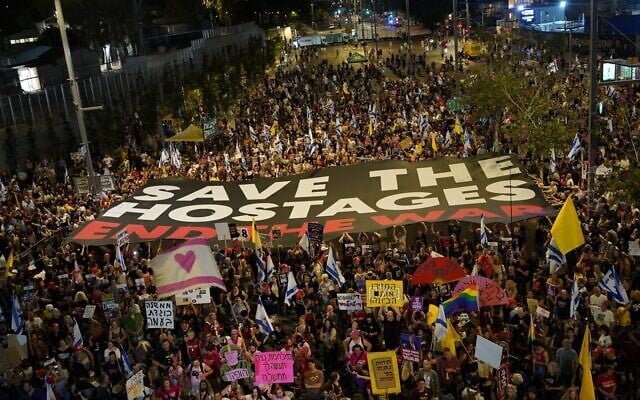
She said that in her first few weeks in captivity, she was held alone, “just me and my captors, constantly on the run.”
“There were entire days without food and little water. One day, I had nothing left, not even water. Fortunately, it started raining. My captors put a pot outside the house where I was held, and the rain filled it,” she said. “I drank that rain water, which was enough for a pot of rice. That’s what kept me going.”
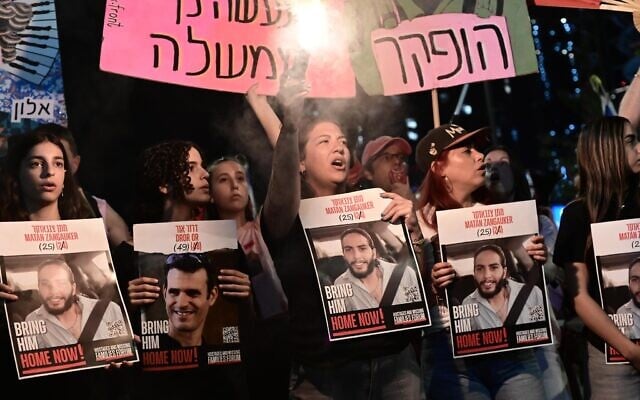
Levy added that in captivity, she didn’t believe anyone in Israel could be aware of what the hostages were experiencing and still be willing to keep them in Gaza.
“But then the first hostages came back, and they said what was happening there,” she said. “They told the truth. That truth wasn’t enough.”
Levy said the protests for the hostages gave her great solace in captivity.
“During that terrible and unimaginable time, they told us that we had been forgotten — but I didn’t believe it. I knew people were fighting for me, because on Saturday nights, when I was allowed to watch television — I saw you, in this square. There, in captivity, I saw thousands standing here wrapped in flags, shouting, singing, holding pictures of the hostages, including mine. You made me feel that I was not forgotten.”
Before the rallies, a group of hostages’ families highly critical of the government held their weekly press conference in Tel Aviv, blasting Prime Minister Benjamin Netanyahu for continuing the war, and expressing concern over his plan to appoint a Shin Bet chief who has reportedly expressed opposition to a hostage deal.
Einav Zangauker, whose son Matan is held hostage in Gaza, said of Netanyahu: “An eternal, politically-motivated war is preferable [to him] over the return of civilians kidnapped on his watch.
“He prefers to flatten Gaza indefinitely, even at the price of 58 Ron Arads,” she said, referring to an Israeli pilot, presumed dead, who went missing in action in 1986 and whose whereabouts remain unknown nearly 40 years later.
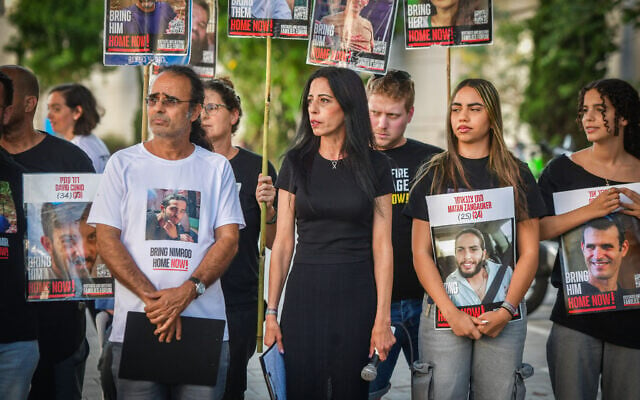
Yehuda Cohen, whose son Nimrod is held in Gaza, accused Netanyahu of evading responsibility. “How is it that after 600 days, he proposes a selective deal?” He said, in reference to a potential agreement that would see only some hostages brought back. “This is a death sentence for whoever is left behind. I call upon President Trump — only you can stop this disaster and return everyone home.”
At an anti-government rally on Begin Road in Tel Aviv, protesters marched by IDF Headquarters, banging drums, lighting flairs and chanting, “Why are they still in Gaza?”
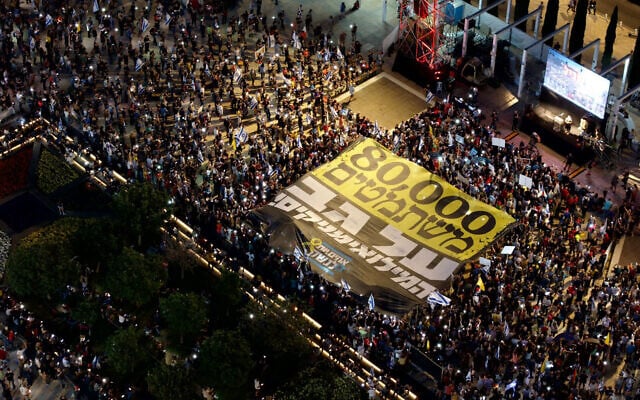
Referring to Netanyahu’s controversial claim this week that Hamas used “flip-flops and AK-47s” in the onslaught of October 7, 2023, Cohen said, incredulously, that the premier seemed to think his son Nimrod’s tank “was taken over with flip-flops.”
Zangauker said that instead of reaching a ceasefire-hostage deal, the government “will continue sending our troops to the front, to create settlements on the backs of our hostages. They’ll continue sabotaging the country and shirking responsibility.
“In order to reach a deal that will release all the hostages, we have to kick out this government,” she said.
The Begin Road protest, which appeared to draw some 1,000 people at its peak, was bolstered by protesters from the earlier anti-government demonstration at Habima Square.
On Kaplan Street, in between the two protests, left-wing activists stood in silence, holding up candles and pictures of children killed by Israel in Gaza since the fighting was renewed on March 18.
Most of the photos featured the name of a slain child, as well as the date and place of their death.
The silent anti-war demonstration, which positions itself outside IDF Headquarters’ southern gate, was noticeably larger this week than in past weeks, with about 400 participants.
This week’s protest came after Democrats party chair and former IDF deputy chief Yair Golan sparked controversy by saying the Israeli government was “killing babies as a hobby in Gaza.”
Golan later stressed that his comments had been directed at the government, not the military, and that “our mission is to ensure that Israel remains a sane country that does not kill children either as a hobby or as a policy.”
His comments were widely condemned by figures across the political spectrum.
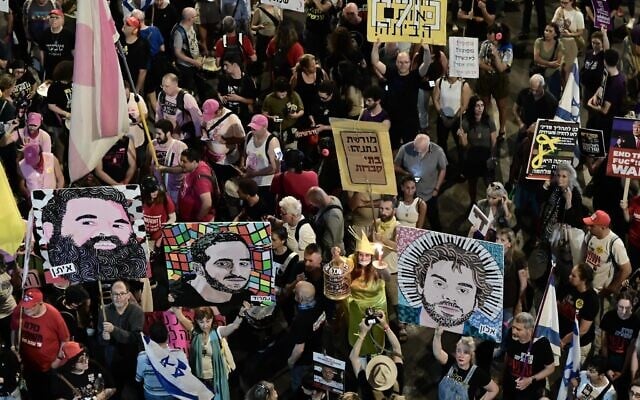
According to a recent list issued by the Hamas-run Gaza health ministry, 16,503 children and teenagers aged 0–18 have been killed as a direct result of the war in Gaza, meaning as a result of gunfire and bombings.
These figures are part of the more than 53,000 people that the Hamas-run ministry says have been killed or are presumed dead in the fighting so far, though the toll cannot be verified and does not differentiate between civilians and fighters.
Hamas and other terror groups are known to regularly employ older teens as operatives and gunmen.
The war broke out on October 7, 2023, when Hamas-led terrorists invaded Israel, killing some 1,200 people, mostly civilians, and kidnapping 251.
Israel says it has killed some 20,000 combatants in battle as of January and another 1,600 terrorists inside Israel on October 7.

